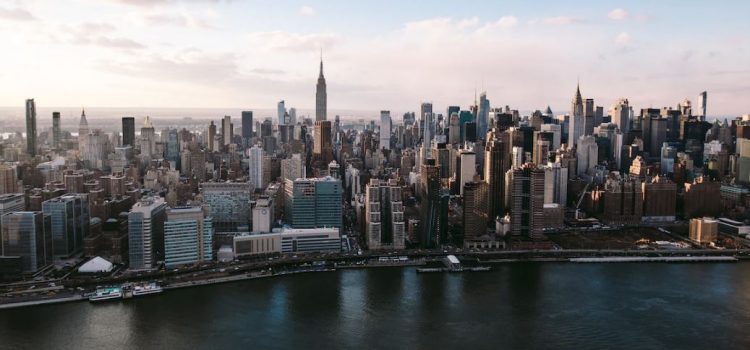
This is a free excerpt from one of Shortform’s Articles. We give you all the important information you need to know about current events and more.
Don't miss out on the whole story. Sign up for a free trial here .
What’s causing cities to sink under their own weight? Can anything be done to save them?
From New York to Jakarta, coastal cities across the globe are gradually sinking under their own weight. Experts say that left unaddressed, the problem, combined with rising sea levels and climate change, will worsen already severe flooding and eventually make coastal areas unlivable.
Keep reading to learn about these disappearing cities.
Disappearing Cities: Causes and Solutions
From New York to Jakarta, coastal cities across the globe are sinking. Every year, New York City drops an average of 1-2 mm, and by the end of 2050, one-third of Jakarta may be completely underwater. The culprit? Subsidence.
What Is Subsidence?
Disappearing cities are caused by land subsidence. Subsidence is the gradual sinking of land under its own weight. Human activity is responsible for 79% of land subsidence, and 60% of that comes from groundwater pumping, which provides drinking water and water for sewage systems. The pumping process sucks water from between below-ground rocks, causing the rocks to fall on one another and compact.
In some cities, the weight of buildings contributes to subsidence by pushing down on land—as is happening in New York City, whose buildings cumulatively weigh 1.68tn lbs.
Problems That Subsidence Causes
Subsidence, in isolation, damages buildings and roads. In combination with rising sea levels and climate change, it causes or increases the likelihood of severe flooding.
Experts say that in the decades ahead, severe flooding could make life in coastal cities with land subsidence unsustainable. The problem has already gripped the world’s fastest-sinking city, Jakarta, 40% of which is now below sea level due to groundwater being pumped out faster than it can be replenished. By 2050, 95% of North Jakarta could be totally submerged.
Experts further warn that land subsidence and flooding problems will worsen as more people migrate to coastal cities.
Addressing Subsidence
Experts say it’s challenging to address the growing subsidence crisis for several reasons.
First (Jakarta’s immediate and blatant sinking problem notwithstanding) subsidence’s physical impacts take a long time to become visible in a way that resonates with people.
Second, subsidence is challenging to remedy once in play because it takes considerably longer to replenish groundwater sources than to extract them. Given this reality, experts say that cities and urban planners focus on subsidence prevention rather than mitigation when possible. Strategies they recommend include:
1. Manage water sustainably. Cities should identify alternate water sources to avoid excessive groundwater pumping.
2. Revive cities’ water ecosystems. Cities should replenish groundwater basins naturally and revitalize existing water ecosystems.
3. Construct water-friendly cities. Urban planners and others should develop cities with preventing sinking and managing rising sea levels in mind:
- Protect sinking coastal city shorelines with living shorelines.
- Build high-rises and skyscrapers on bedrock, not soft soils prone to sinking.
- Capture and store water in tunnels during periods of flooding.
- Build floating cities that adapt as water levels change.
Looking Ahead
Experts warn that in an increasingly likely worst-case scenario, where sea levels rise six and a half feet in the next 20 years, four of New York City’s five boroughs could be chronically flooded—along with 670 other US cities, including Boston, Fort Lauderdale, Los Angeles, and Newark.

Want to fast-track your learning? With Shortform, you’ll gain insights you won't find anywhere else .
Here's what you’ll get when you sign up for Shortform :
- Complicated ideas explained in simple and concise ways
- Smart analysis that connects what you’re reading to other key concepts
- Writing with zero fluff because we know how important your time is






